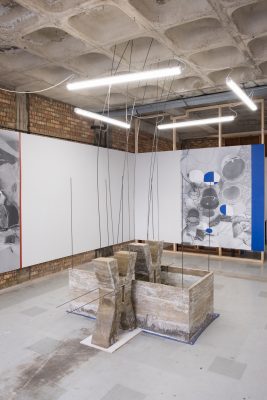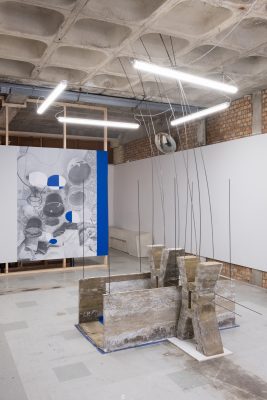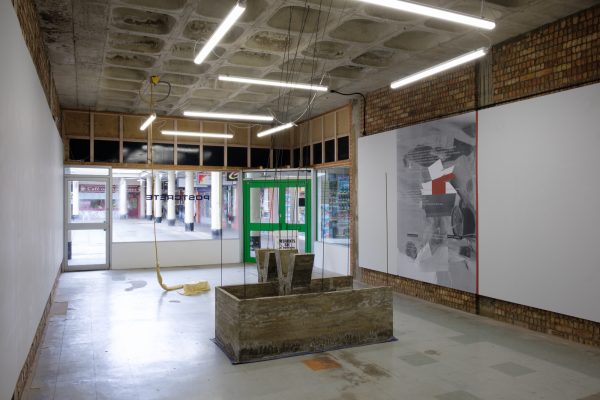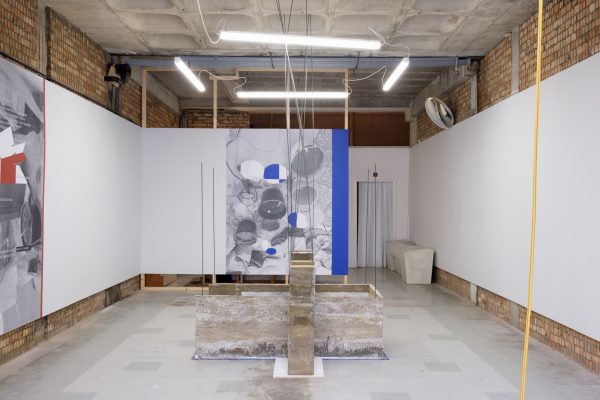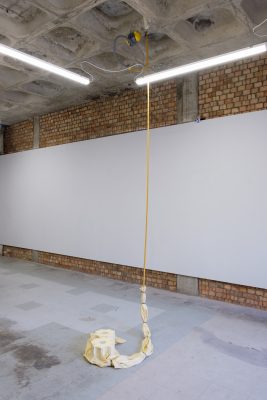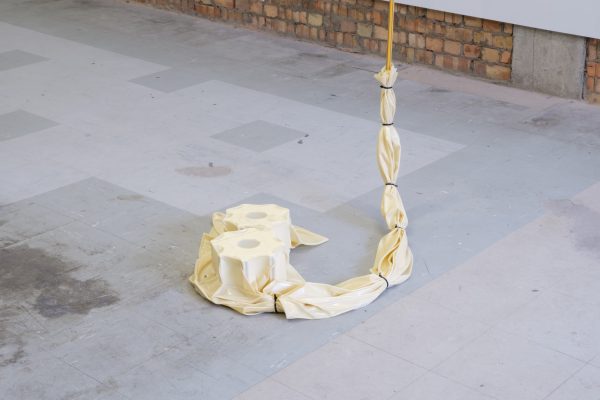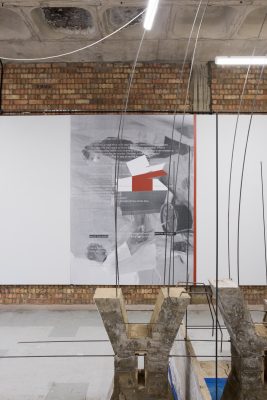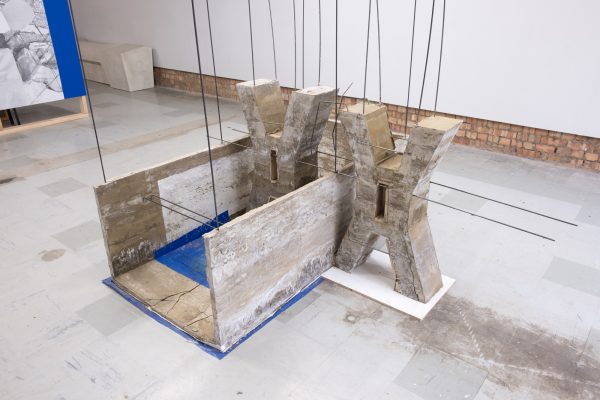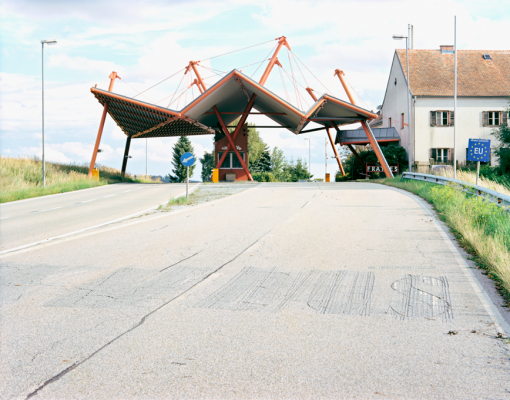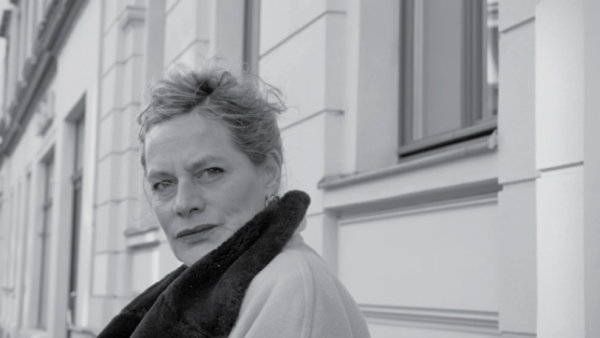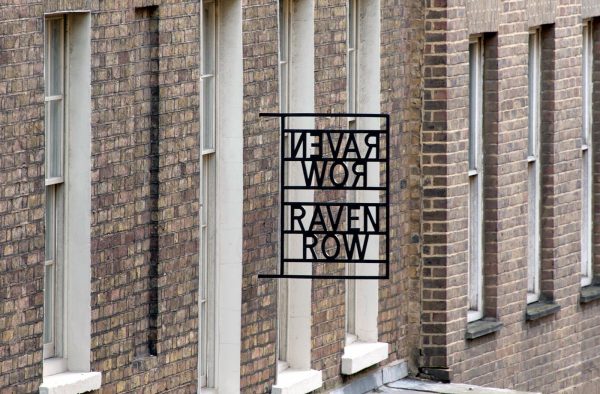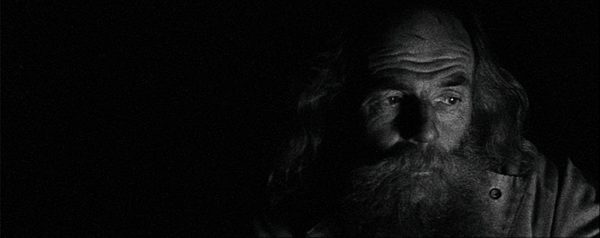Lower.Green is situated in the unlikely surroundings of a near-dead mall in Norwich. It is not just any mall, but Anglia Square Shopping Centre: a decaying quondam monument to Modernism circa-1970, in which the architecture calls to mind a cross between a spaceship and an office building from the science fiction film Brazil (1985) – severe, oppressive, featureless at first glance, and possessed of certain smooth, seductive lines at second stare. There is a bargain store that sells tote bags pitched unintentionally in the key of Barbara Kruger, with the brilliantly apropos slogan WHEN I DON’T SHOP I FEEL EMPTY, and a cinema called, with some irony, The Hollywood. ‘In July, 2013,’ boasts Wikipedia, ‘the cinema hosted the world premiere of Alan Partridge: Alpha Papa.’
It is difficult to say why Anglia Square Shopping Centre is appealing, in the same way it is difficult to pinpoint the appeal of certain human faces. (The French, in coining jolie laide to describe women who are ugly but incredibly alluring, may have come the closest to elucidating this specific feeling, even if they did not necessarily intend it to describe a building.) It is Brutalist, but not in the more elegant mode that tends to be salivated over by the kind of people who WhatsApp each other listings from The Modern House, or regularly eat bone marrow at St John’s, or give their children names like ‘Clementine.’ It is extravagant and stately in its ugliness. It is unfortunately very, very doomed. Lower.Green’s final show will be this spring, thanks to a planned destruction of the shopping centre by the City Council; the area’s redevelopment is slated to cost £271 million, roughly equivalent to 54,308,617 tickets to see Alan Partridge: Alpha Papa at The Hollywood, or 184,000,000 oddly-existential tote bags. Weston Homes – the developer whose aim is to replace it with ‘1,234 new homes, a leisure quarter with a cinema, car parks, a 200-bed hotel, [and] a tower block’ – have described the proposed plan as being like ‘Marmite’, which is an especially euphemistic way to say that of the 939 comments submitted to the council, 767 were complaints.
Postcrete (2019) by Evita Vasiljeva, the latest exhibition at Lower.Green, nods to this confusion between permanence and impermanence by making its centrepiece a different kind of concrete monument: a pair of crosses, Biblical and vaguely kinky, sprouting ceiling-grazing wire. Given the borderline-erotic love of Brutalism among the bohemian middle-classes, so intense that a symposium on the subject at the Royal Academy ended up with the title ‘Concrete Fetishes’, it is no wonder that the work is as suggestive of a dominatrix’s equipment as it is of architecture. Kinkier still, if far less Brutalist and more S&M brutal, is a sculpture roughly four feet to the left (Co-Operation: Melancholia’, 2019) that pairs a juddering gas compressor with pale, flesh-toned latex, wrapped around two heavy, wheel-like forms. Vasiljeva often uses compressors to effectively shrink-wrap or vacuum-pack sculptural objects, calling to mind a body wrapped in plastic, or in rubber.
Vasiljeva is from Latvia, where she says people are repulsed by Soviet architecture, and by its unflinching invocation of their occupation. ‘It represents Russian power,’ she explained. ‘They want to knock it down.’ For two weeks before the show at Lower.Green, she drew on what she saw of Anglia Square to build the central cross-and-wire sculpture, which she calls ‘the box.’ She was inspired in particular by the flyover several minutes down the street, under which a burger van occasionally displays an ad that reads: HAVE YOU HAD SOME UNDER THE FLYOVER? ‘I was imagining,’ she went on, ‘that I would freeze [a] particular moment in time.’ The resulting work looks as though it might last forever, though the very opposite is true: on principle, Vasiljeva destroys her work, making her two-week residence at the soon-to-be-bulldozed Lower.Green particularly fitting. Breaking up the stolid grey, and making what results more memorable, are vivid flashes of International Klein blue, another trick of Vasiljeva’s to make the dead affect of concrete more like something mutable, alive.
With no experience in sculpture or construction, I went into Postcrete thinking that the show’s name was a pun or portmanteau – post-concrete, winking at the imminent destruction of the Square. It turned out to be the material – a mixture of cement and sand and certain additives – from which Vasiljeva’s heavy monument is made, making it as much a reference to construction as it is to demolition. Lower.Green, I’m guessing, will assume a new form elsewhere once the lease is up. Vasiljeva will destroy the ‘box’, dismantle her compressor, and begin again. If Anglia Square is to be destroyed, it has not yet been touched; it will be difficult for those who love it to protect it, but it may not prove impossible. For now the gallery, the show and the surrounding architecture hover precariously between life and death, fulfilment and destruction. Is it any wonder that I saw the work in situ and thought, however abstractly, about S&M?
